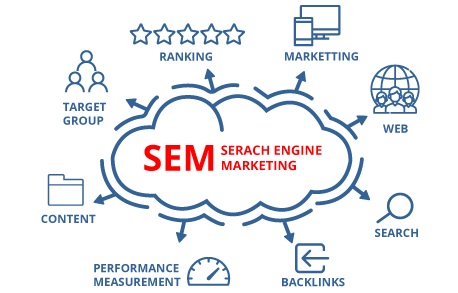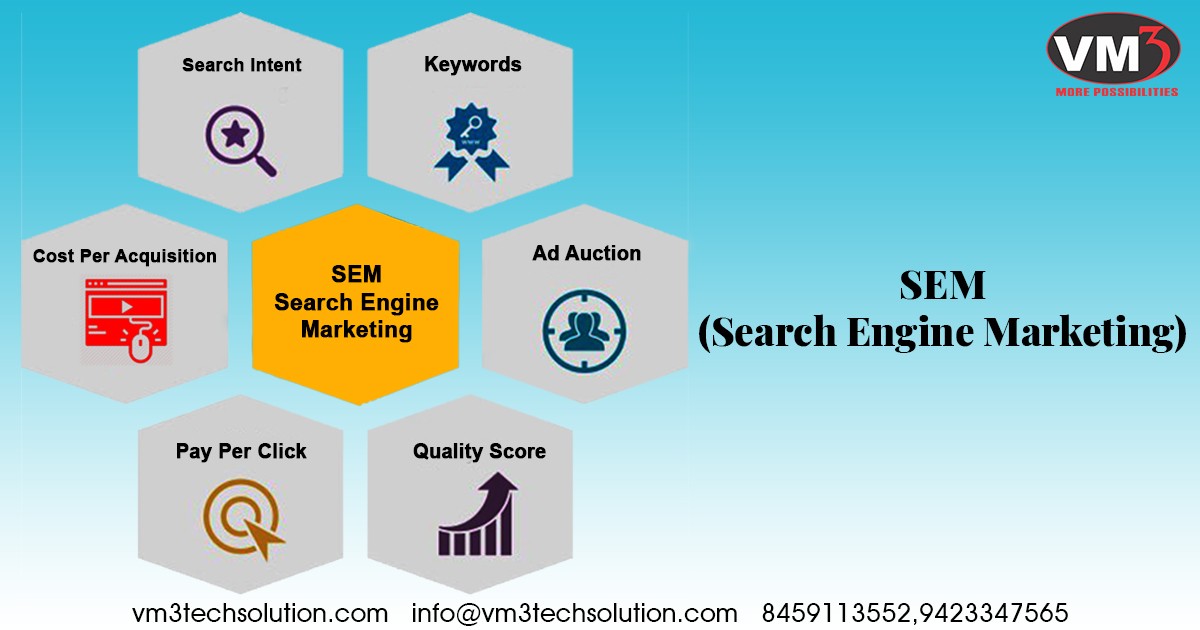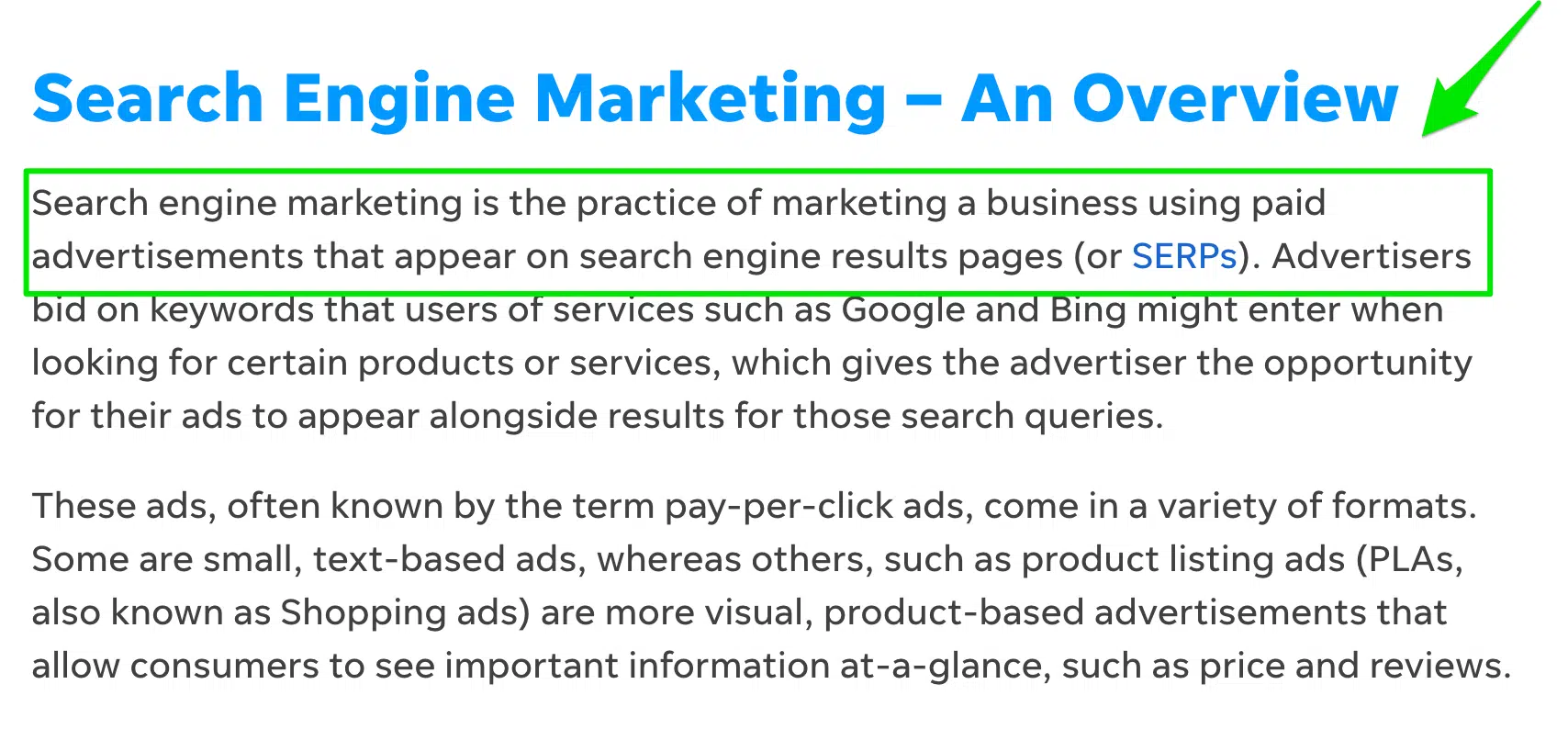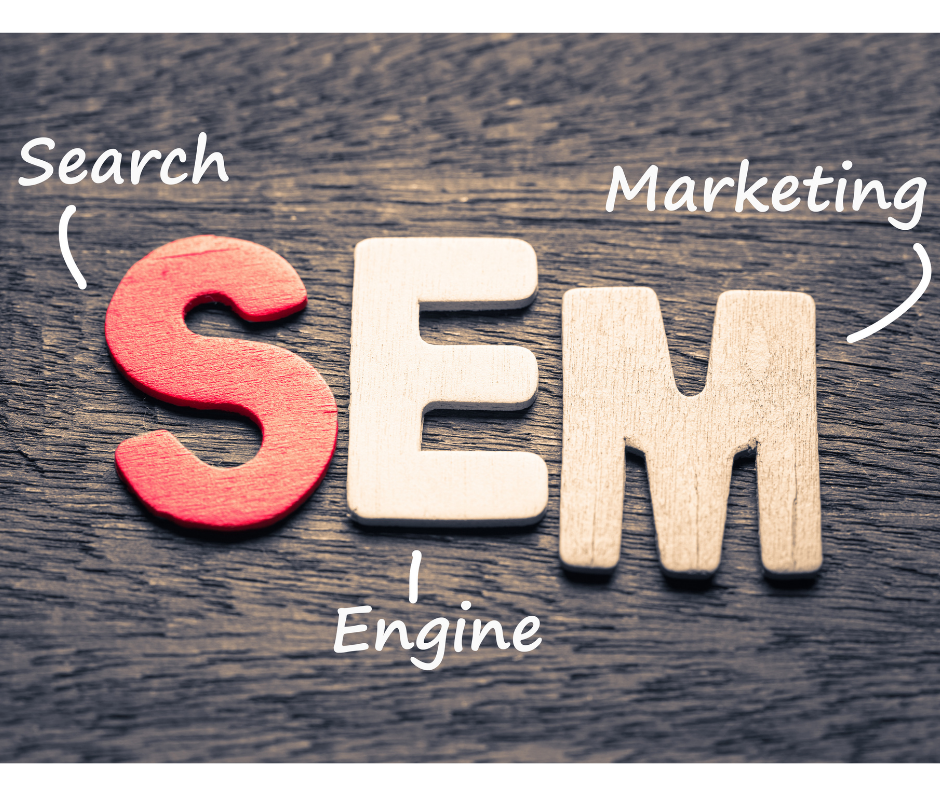SEM stands for Search Engine Marketing, a digital marketing strategy used to increase the visibility of a website in search engine results pages (SERPs). It primarily involves paid advertising, where marketers bid on keywords that users might enter when looking for certain products or services online.
This introduction to SEM in digital marketing will delve into its significance for businesses aiming to enhance their online presence. Through SEM, companies can quickly attract targeted traffic, leading to improved conversion rates and a higher return on investment. It leverages the power of search engines like Google and Bing to reach potential customers at the perfect moment—when they’re actively searching for solutions.
Effective SEM campaigns combine various elements, including keyword research, ad creation, budget management, and performance analysis, ensuring that every click has the potential to contribute to business growth. With the digital landscape becoming increasingly competitive, mastering SEM is crucial for marketers looking to stand out and capture consumer attention.
Introduction To Sem In Digital Marketing
SEM stands for Search Engine Marketing. It helps websites get more visitors. Think of it like a spotlight. It shines on your website so more people can find it.
The Role Of Sem
SEM plays a big role in digital marketing. It uses ads to make your website more visible. When people search for something online, SEM helps your website show up at the top.
- Paid Search Ads make your website appear above others.
- Cost-Per-Click (CPC) is what you pay when someone clicks your ad.
- Keywords are important words that connect ads to searches.
Sem Vs. Seo: Key Differences
| SEM | SEO |
|---|---|
| Paid advertising | Free techniques |
| Quick results | Takes time to show results |
| Targets specific keywords | Focuses on content quality |
SEM and SEO both help your website get noticed. SEM uses ads for quick visibility. SEO improves your site over time for free.
Core Components Of Sem
Search Engine Marketing (SEM) turns the spotlight on your business in a crowded digital world. It uses various tools to catch the eye of potential customers. Let’s unveil the core components of SEM that make it an essential strategy for digital success.
Keywords At The Heart Of Sem
Keywords are the seeds of any SEM campaign. They connect user queries to your ads. Think of them as signposts that guide potential customers to your products or services.
- Research: Find words your customers use.
- Relevance: Choose keywords that match your offerings.
- Management: Update your list with new trends.
Pay-per-click Advertising Explained
Pay-Per-Click (PPC) is a model where you pay for each click on your ads. It’s like hiring a digital billboard, but you only pay when someone shows interest.
| Budget Control | Targeting | Measurability |
|---|---|---|
| Set your own spending limits. | Reach the right people. | Track your ad’s success. |
With PPC, immediate traffic to your site grows. You can measure the impact of your ads in real-time.
Setting Up An Sem Campaign
When diving into the digital marketing world, setting up an SEM campaign is a key step. It’s like unlocking a door to potential customers. Let’s explore how to set up an SEM campaign effectively.
Defining Campaign Goals
Clear goals guide an SEM campaign. Start by asking what you want to achieve. More website visitors? More sales? Each goal requires a different approach.
- Increase brand awareness
- Boost sales
- Generate leads
Budget Allocation Strategies
Money matters in SEM campaigns. You need a smart budget plan. Spend money where it works best.
| Strategy | Details |
|---|---|
| Cost-per-click (CPC) | Pay when someone clicks your ad. |
| Cost-per-impression (CPM) | Pay for ad views, not clicks. |
| Daily budget | Set a daily spending limit. |
Start with a small budget. Test what works. Then invest more in successful strategies.
Keyword Research For Sem
Keyword Research for SEM is a cornerstone of digital marketing strategies. It involves finding the right terms that potential customers use when they search online. These terms help businesses target their ads effectively. Let’s dive into the process and tools that make keyword research successful.
Tools For Keyword Discovery
Finding the right keywords is essential for SEM success. Several tools can help with this task:
- Google Keyword Planner: Offers insights into search volumes and competition.
- SEMrush: Provides detailed keyword analysis and competitive data.
- Ahrefs: Helps identify keyword opportunities and SERP positions.
- Moz Keyword Explorer: Assists with keyword suggestions and SERP analysis.
Analyzing Keyword Relevance
Analyzing keywords ensures they align with business goals. Consider these points:
- Match keywords with user intent to ensure relevance.
- Check search volume to estimate traffic potential.
- Analyze competition to gauge the difficulty of ranking.
- Use long-tail keywords to target specific queries.
| Keyword | Search Volume | Competition Level | User Intent Match |
|---|---|---|---|
| Best digital cameras | High | Medium | Strong |
| Affordable DSLR camera | Medium | Low | Strong |
| Pro camera specs comparison | Low | High | Moderate |
Accurate keyword analysis forms the backbone of any SEM campaign. It guides businesses to target the right audience.
Creating Effective Sem Ads
Search Engine Marketing (SEM) helps businesses reach customers instantly. Creating effective SEM ads is vital. It drives traffic and sales through paid search. Here’s how to create ads that resonate and convert.
Crafting Compelling Ad Copy
Great ad copy catches eyes and sparks action. Start with a strong headline. It should match user queries and offer solutions. Use power words to invoke emotions. They boost click-through rates (CTRs). Highlight unique selling points (USPs). They set you apart from competitors. Include a call-to-action (CTA). It guides users on what to do next.
- Headline: Make it catchy and relevant.
- Power Words: Excite, save, discover, free.
- USPs: Mention deals, exclusivity, or quality.
- CTA: Use phrases like ‘Buy Now’ or ‘Learn More’.
Designing Landing Pages For Conversion
Landing pages turn clicks into customers. Keep design clean and focused. Use bold headlines and bullet points for easy reading. Add high-quality images that show your product or service. Place a clear CTA above the fold. It should stand out and be easy to find. Ensure forms are simple and quick to fill. Test different elements. Use A/B testing to find what works best.
| Element | Tips |
|---|---|
| Headlines | Keep them clear and on point. |
| Images | Use visuals that connect with the text. |
| CTA | Make it pop with color and size. |
| Forms | Ask only for essential information. |
Remember, landing pages should mirror ad copy. They must deliver on ad promises. This builds trust and improves conversion rates.

Credit: www.proideators.com
Sem Bidding Strategies
In the world of digital marketing, SEM (Search Engine Marketing) stands out. It helps businesses shine online. A key part of SEM is bidding strategies. Let’s dive into what these strategies are and how to use them.
Understanding Bid Management
Bid management is like playing a smart game. You decide how much money you want to spend on ads. This decision can make your ad show up more on Google. It’s all about finding the right price to pay for each click your ad gets.
- Set goals: Know what you want from your ad.
- Know your budget: Don’t spend more than you have.
- Use tools: Many online tools can help you decide on a bid.
Techniques For Optimizing Bids
To win at SEM, you need to keep improving your bids. Here are some ways to do it:
- Keyword research: Find the best words to target.
- Ad scheduling: Show your ads at the best times.
- Location targeting: Show your ads where your customers are.
Remember, testing different bids is key. What works today may not work tomorrow. Stay flexible and keep learning.
| Strategy | Benefits |
|---|---|
| Manual Bidding | You control your budget closely. |
| Automated Bidding | Google helps find the best bid for you. |
Measuring Sem Success
Measuring SEM (Search Engine Marketing) success is vital. It tells us how well our ads perform. To do this, we look at certain signs of success. These signs are called Key Performance Indicators (KPIs). We also use special tools to understand these signs better. Let’s dive into how we can measure our SEM success effectively.
Key Performance Indicators
We use KPIs to see if our SEM strategies work. Some important KPIs include:
- Click-Through Rate (CTR): Shows how often people click our ads.
- Conversion Rate: Tells us how many clicks turn into actions, like buying.
- Cost Per Click (CPC): How much each ad click costs us.
- Quality Score: Google’s rating of our ad’s quality and relevance.
Tracking these KPIs helps us understand our ad’s impact.
Leveraging Analytics For Insights
Analytics tools give us deep insights into our SEM campaigns. They help us see:
- Which ads bring the most traffic.
- How users behave on our site after clicking an ad.
- The overall return on investment (ROI) of our SEM efforts.
Google Analytics is a powerful tool for this. It tracks how users interact with our site. This info helps us make smarter decisions for future campaigns.
Challenges And Solutions In Sem
Search Engine Marketing (SEM) stands as a vital component in digital marketing. But it brings its own set of challenges. This section explores common hurdles and provides effective solutions to ensure your SEM strategies thrive.
Overcoming Common Obstacles
High competition in SEM can be daunting. It often leads to increased cost-per-click (CPC) and makes standing out tough. To navigate this, conduct thorough keyword research. Use tools like Google Keyword Planner to find less competitive, yet relevant keywords.
Another issue is ad disapproval. Google has strict ad policies. Ensure your ads comply by reading Google’s guidelines. If disapproved, revise and resubmit promptly.
Limited budget can restrict your SEM efforts. Focus on optimizing your Quality Score. A higher score can lower your CPC and improve ad placement.
An inadequate understanding of your audience leads to poor results. Create detailed buyer personas. They help tailor your SEM campaigns to target ideal customers.
Advanced Tactics For Growth
For growth, use remarketing strategies. They help you reach users who have already interacted with your website. This boosts conversions.
- Test different ad formats. Visual ads can perform better than text-only ones.
- Implement A/B testing. It finds the most effective ad elements.
- Analyze data regularly. Use analytics to refine your SEM strategies.
- Stay updated on SEM trends and algorithm changes.
Combine SEM with SEO for long-term success. Both drive traffic but in different ways.
Finally, invest in automation tools. They save time and improve campaign management. Tools like Google Ads Editor can be very helpful.
Future Of Sem
Future of SEM points to a dynamic landscape. It combines technology and new strategies. Marketers must stay informed. They must adapt to maintain a competitive edge.
Trends Shaping Sem
- Artificial Intelligence (AI): AI predicts user behavior. It enhances targeting. It boosts ad performance.
- Voice Search: Voice-activated searches grow. They require keyword adjustments. They favor conversational phrases.
- Visual Search: Image-based queries rise. Platforms like Pinterest lead. Adapting to visual search is key.
- Mobile-First: Mobile traffic dominates. Google prioritizes mobile-friendly sites. SEM strategies must reflect this.
Preparing For Changes In Digital Advertising
Change is constant in SEM. Stay ahead with these steps:
- Learn about AI: Understand AI’s role. Use it to improve ads.
- Optimize for Voice & Visual Search: Use natural language keywords. Add image alt-text for visuals.
- Focus on User Experience: Ensure fast, mobile-friendly sites. User experience affects ad quality scores.
- Understand Privacy Laws: Data privacy rules change. Know them. Respect user data.

Credit: www.linkedin.com

Credit: searchengineland.com
Frequently Asked Questions
What Is The Difference Between Seo And Sem?
SEO optimizes websites to rank higher in organic search results, while SEM involves paid advertising to appear in search engine results.
What Is Sem With An Example?
SEM, or Search Engine Marketing, promotes websites by increasing their visibility in search engine results pages primarily through paid advertising. For example, Google Ads campaigns target specific keywords to display a business’s ad atop search results.
What Is An Example Of Sem Marketing?
An example of SEM marketing is using Google Ads to place a sponsored link at the top of search engine results for targeted keywords.
Is Sem The Same As Google Ads?
SEM, or Search Engine Marketing, encompasses a broader range of strategies including Google Ads, which is just one platform for SEM. Google Ads specifically refers to Google’s paid advertising product.
Conclusion
Understanding SEM is essential for any digital marketer aiming to enhance their online visibility. By leveraging paid search strategies, businesses can drive targeted traffic and achieve measurable results. Embracing SEM could mean the difference between getting lost in the digital noise and rising to the top of search engine rankings.
As you refine your online marketing efforts, remember that SEM is a powerful tool in your arsenal, ready to boost your brand’s presence and performance.


